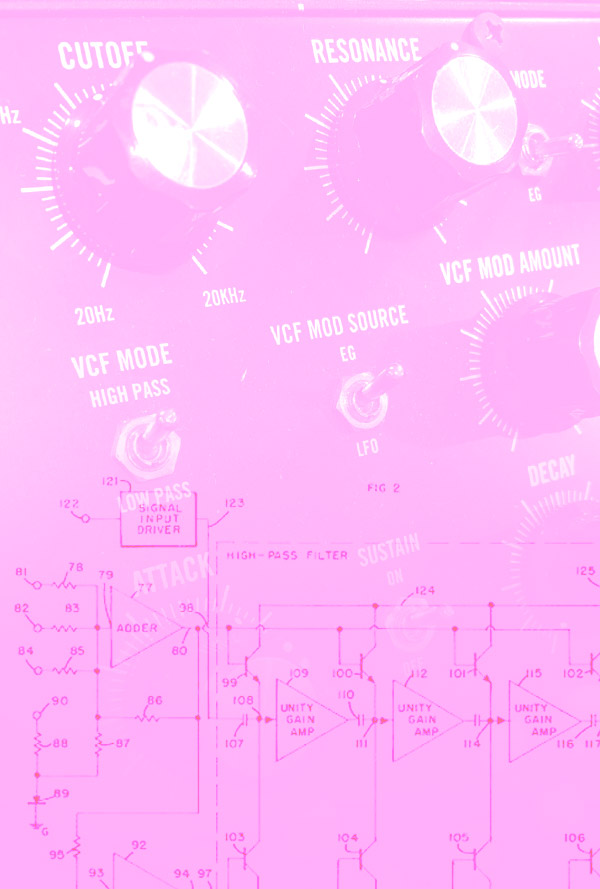
The common filter is a huge part of shaping sound in electronic music production and DJing. You've probably used a filter many times before without ever really thinking about the in-and-outs of what's actually going on. That's one of most powerful characteristics of a filter, they're easy to use, yet can have dramatic effects on the sounds you're working with. In simplest terms, a filter controls the audible harmonics of whatever signal is being passed through it. In a broader sense, it's a barrier that allows certain elements to pass through and others not. In musical applications, filters allow certain parts of the frequency spectrum to pass through them unaffected, while blocking out others. This modifies the timbre and tonal quality of the sound, allowing you to do things like emulate certain instruments with a synth, or provide moments of contrast in a DJ mix.
Filters are generally of four types; Low-pass, High-pass, Band-pass and Notch. Each of these types is a description of the shape the filter takes in relation to the frequency spectrum and as a result, which frequencies it passes (allows through) and which it blocks. The point on the frequency spectrum at which the filtering takes affect is known as the "cutoff".
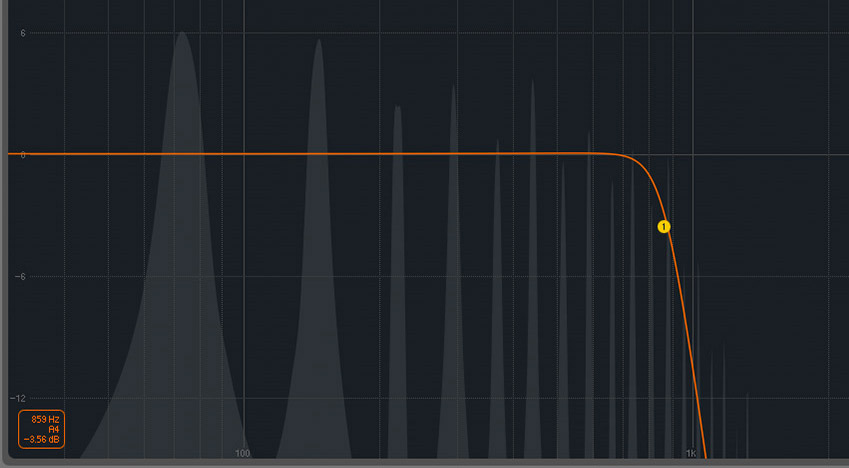 Low-pass filter shape
Low-pass filter shape
Low-Pass:
This is probably the most common filter mode. It allows any frequencies below the cutoff point to pass through and be heard. This is useful for getting rid of high end material that you may not want. It's sometimes also referred to as a High-cut filter.
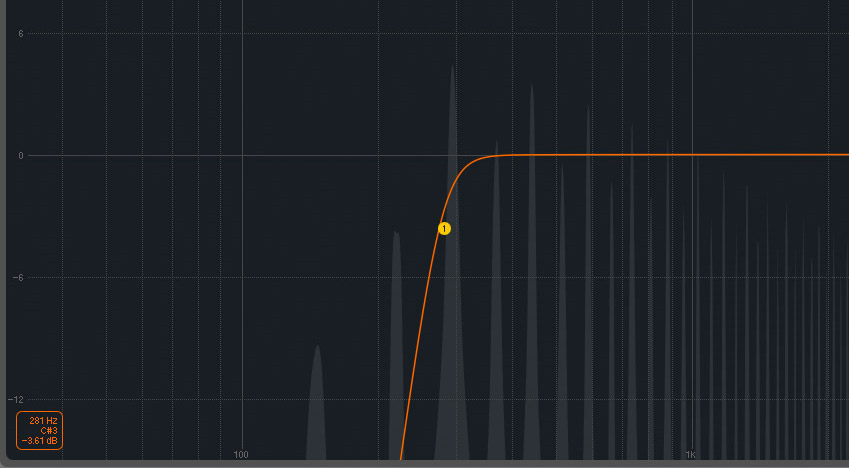 High-pass filter shape
High-pass filter shape
High-Pass:
The opposite of a Low-Pass, this mode blocks frequencies below the cutoff point, allowing you to remove low-end content. Also know as a Low-cut.
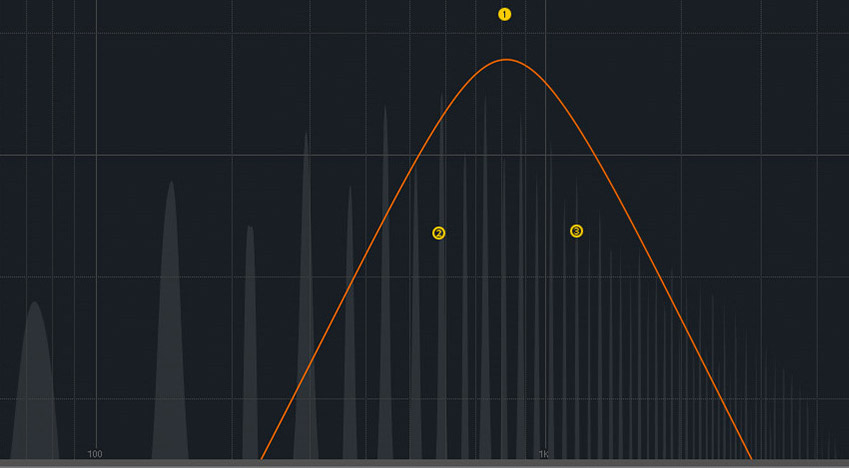 Band-pass filter shape
Band-pass filter shape
Band-Pass:
A combination of Low-pass and High-pass. It allows a certain band of frequencies to be heard while blocking everything on either side. Band-pass filters are great for isolating and accentuating certain frequencies ranges.
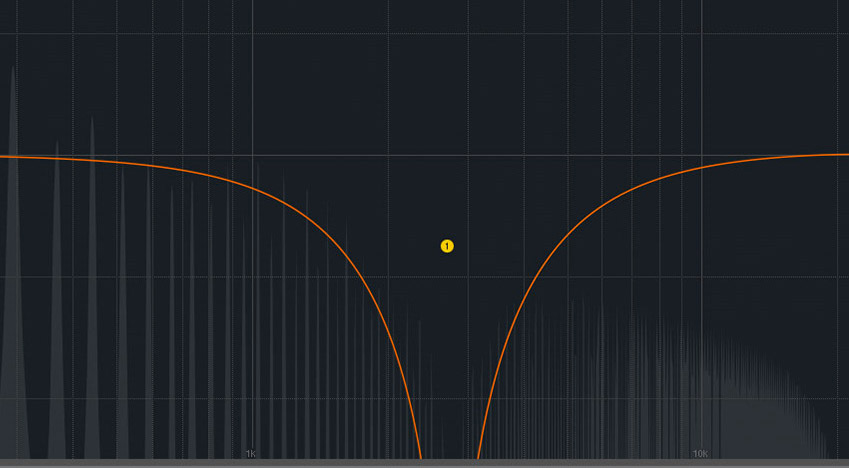 Notch filter shape
Notch filter shape
Notch:
A Notch filter is the opposite to a Band-pass; it blocks out a certain range of frequencies and allows everything either side to pass and be heard. They're useful for taming or removing annoying or overpowering elements from a sound.
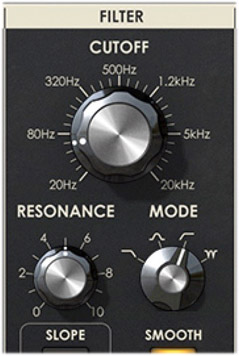 Selectable multimode filter
Selectable multimode filter
Different instruments or mixers will have different filter types for you to make use of. Sometimes these are available for use simultaneously, for example a synth may have a dedicated Low-pass and High-pass filter, which allows you to create a Band-pass. Elsewhere a unit may have one filter with multiple modes, selectable via a switch, button or knob or just one dedicated filter type. Often these "multimode" filters will display their options using small images of the filter shapes (similar to the orange line in the filter mode images above) or they may just use shorthand; LP = Low Pass, HP = High Pass etc.
The cutoff is the point at which the filter begins to remove or "cut" the frequencies out, however, at the cutoff point frequencies aren't simply stopped dead. The signal gain starts to curve down and then continues to drop steadily. How severely this drop happens is known as the "slope" and will determine how much of the sound a filter actually removes. You might see terms like "12db per octave" or "4-pole" used in regard to filters, this is basically language to describe how steep the slope is. 12db per octave means that every time a frequency goes up an octave (doubles) the signal gain is reduced by 12 decibels. Therefore, a 24db per octave filter will "cut" the frequency more sharply than a 12db per octave filter. A "pole" is representative of 6db per octave of gain reduction so a 2-pole filter = 12db per octave and a 4-pole filter = 24db per octave.
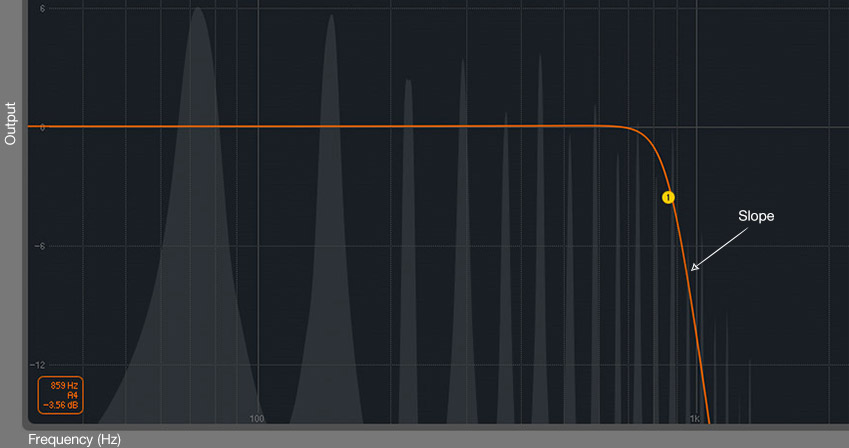
When looking at filter cutoff another important element is Resonance, also referred to as "Q", which stands for Quality (in this case more is not always better). This is a boost to the frequencies at and around the cutoff point. The more you increase the resonance the more emphasis on that small band of frequencies. Increasing the resonance can help in highlighting cutoff frequency modulations, like filter sweeps; moving the cutoff back and forth while sound is passing through it.
Below is a Low-pass filter sweep with the resonance set fairly high, you can hear the accentuated harmonic content at the cutoff point as the filter sweeps down and then back up again:
From a performative standpoint most DJ mixers have a dedicated filter knob for either individual channels or the master channel or both. Most modern Pioneer mixers and controller units have one knob per channel that when turned clock-wise acts as a High-pass filter and when anti-clockwise is a Low-pass filter. While Xone mixers by Allen & Heath have selectable filter modes that govern the way the filter knob reacts. Using the filter to remove frequency ranges can allow you to emphasise certain parts of the music e.g. removing the low-end quickly before a new element is introduced and then dropping it back in or using a heavy filter sweep to add tension during a break-down. Some DJ's actually like to mix using filters, rather than the channel EQ, using them to carve out frequencies in order to make room for the next piece of music. The PLAYdifferently Model 1 mixer is built specifically for this style of mixing:
 PLAYdifferently Model 1's Filter/EQ section
PLAYdifferently Model 1's Filter/EQ section
In regard to filter use on synthesizers, the most common mode of synthesis that you'll come across is "subtractive". Subtractive synthesis is built around the idea of shaping sounds from the oscillators using the filter section (thereby subtracting frequencies). Using the filter on a synthesizer can again, aid in adding tension and release points in the music but is more often used creatively to sculpt the sound. For example, a bass sound that heavily uses a low-pass filter to get rid of high-end content can sound dark and brooding. Synthesizers also, more often than not, allow you to modulate the filter cutoff using an LFO or external source, meaning cutoff movements can be automated, adding further complexity.
Below is a Low-pass filter with it's cutoff being modulated by an LFO:
Finally, certain filters are desired for their characteristics. The filter circuits on Moog synthesizers (Transistor Ladder) are widely accepted to have a warm, smudgy, rubbery sound and have been emulated countless times, both physically and digitally. Another great example is the Diode Ladder filter, which was used in the Roland TB-303 and contributed heavily to that unit's iconic squelchy sound that became strongly associated with Acid-House and Techno.